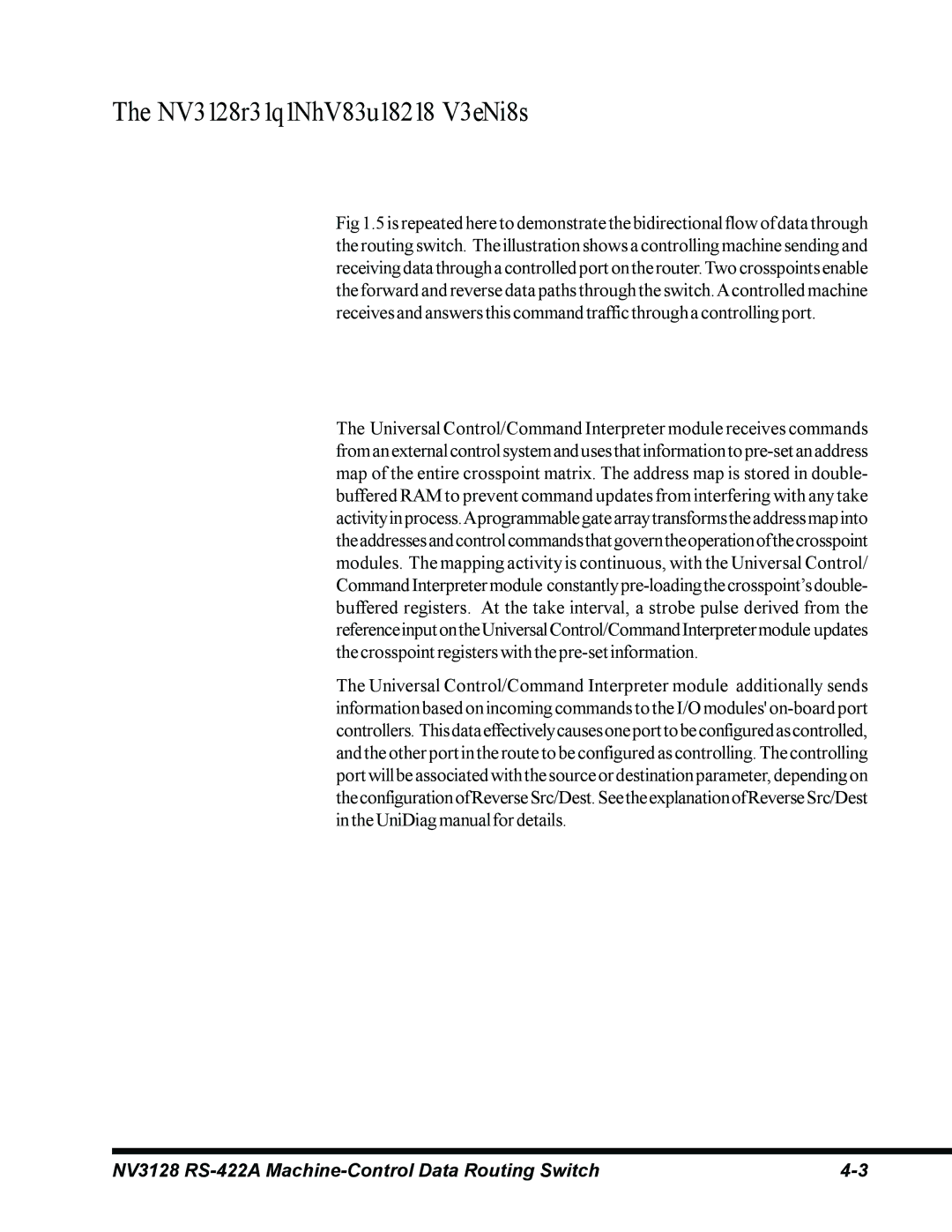
CHAPTER FOUR - THEORY OF OPERATION
4.1 SYSTEM
Fig 1.5 is repeated here to demonstrate the bidirectional flow of data through the routing switch. The illustration shows a controlling machine sending and receiving data through a controlled port on the router.Two crosspoints enable the forward and reverse data paths through the switch.Acontrolled machine receives and answers this command traffic through a controlling port.
4.1.1 CONTROL STRUCTURE
The Universal Control/Command Interpreter module receives commands from an external control system and uses that information to pre-set an address map of the entire crosspoint matrix. The address map is stored in double- buffered RAM to prevent command updates from interfering with any take activityinprocess.Aprogrammablegatearraytransformstheaddressmapinto theaddressesandcontrolcommandsthatgoverntheoperationofthecrosspoint modules. The mapping activity is continuous, with the Universal Control/ CommandInterpretermodule constantlypre-loadingthecrosspoint’sdouble- buffered registers. At the take interval, a strobe pulse derived from the referenceinputontheUniversalControl/CommandInterpretermodule updates the crosspoint registers with the pre-set information.
The Universal Control/Command Interpreter module additionally sends information based on incoming commands to the I/O modules' on-board port controllers. Thisdataeffectivelycausesoneporttobeconfiguredascontrolled, and the other port in the route to be configured as controlling. The controlling port will be associated with the source or destination parameter, depending on theconfigurationofReverseSrc/Dest.SeetheexplanationofReverseSrc/Dest in the UniDiag manual for details.
NV3128 RS-422A Machine-Control Data Routing Switch | 4-3 |
